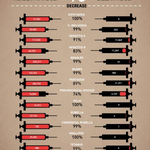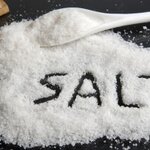Public Health

Hospitals across the country have seen sharp declines in rates of central line-associated blood stream infections (CLABSIs) and ventilator-associated pneumonias (VAPs) among critically ill neonates and children, according to a new study which analyzed incidences rates of CLABSIs, VAPs and catheter-associated urinary tract infections (CAUTIs) for 173 neonatal intensive care units (NICUs) and 64 pediatric intensive care units (PICUs) from 2007-2012.
The study concluded that among the hospitals there was substantial decline in some infections during the investigation period. NICUs and PICUs both…

I've seen some pretty awful tactics used by various self-promoters, quacks, and other invertebrates over the years, but this one may take the organic cake.
Internet huckster Mike Adams, who ranks right up there with Crazy Joe Mercola, in terms of spreading self-serving, harmful nonsense around the web has outdone even himself this time.
His September 9th article, entitled "Mystery virus EV-D68 exploding among vaccinated children; U.S. medical system clueless without a vaccine," promotes his anti-vaccine agenda in the most disingenuous, disgusting way—by implying that children who had…

Ideally lollipops, cookies, sugar-sweetened drinks, potato chips and processed meats will never appear in your shopping cart.
Want to stack the nutrition odds in your favor? The key is good food so here are five things to never let into your shopping trolley: candies, cookies, sugar-sweetened drinks, potato chips and processed meats.
Known as discretionary foods, all five are high in either added sugars, saturated fat or salt. Discretionary foods provide calories but not many nutrients.
Consuming a lot of discretionary foods and drinks increases your risks of weight gain, obesity,…

Though nearly every medical body and the United Nations would rather that epidemiologists stop talking about "pre-diabetes", concerns are still there. Governments are worried that working up the public about pre-diabetes will increase patient costs by 500 percent while advocates for it to be taken seriously believe it might head off serious issues later in life.
Pre-diabetes is a general term that refers to a vague intermediate stage between normoglycemia and diabetes mellitus. It has been broadened to include individuals with impaired glucose tolerance (IGT), impaired fasting glucose (IFG)…

Though the American government now wants to control intake, another study has affirmed that claims of a link between table salt and hypertension were always on shaky ground.
A new paper in the American Journal of Hypertension instead finds that increased Body Mass Index, age, and non-sodium dietary factors are bigger factors in systolic blood pressure than sodium intake.
The researchers measured the effects of sodium intake, Body Mass Index, physical activity, alcohol consumption, and non-sodium dietary factors on the blood pressure of 8,670 French adults and concluded that Body Mass…

The hygiene hypothesis and its cousins, like that rural settings make children microbiologically stronger, now has a study that vegetarian activists are not going to like: sleeping on animal fur in the first three months of life has been linked to reduced risk of asthma.
Previous studies have suggested that exposure to a wider range of environments from young age could be protective against asthma and allergies - urban settings have not found that to to be so. But in a new study, researchers investigated children from a city environment who had been exposed to animal skin by…

Hospitals can greatly improve their flu vaccination rate among health care workers by forcing employees to get them, finds the Henry Ford Health System where they did just that.
Citing its own data, Henry Ford researchers say the health system achieved employee vaccination rates of 99 percent in the first two years of its mandatory policy, in which annual vaccination compliance is a condition of employment. Nationally, 63 percent of health care workers were immunized against the flu in the past two years, according to the Centers for Disease Control and Prevention.
Allison Weinmann, M.D…

Wheat is the latest fad diet victim and a new study presented at the European Respiratory Society's International Congress adds to its villainy. It says flour is worse for occupational asthma in French workers than toxic chemicals.
The scholars analyzed all cases of occupational asthma in France to understand who was most affected by the condition and what the main causes were. Data were collected over a 3-year period from a network of respiratory doctors specialized in occupational diseases. 330 cases were analyzed.
The scourge of French employment. Image: Georgetown
Researchers…

The critical links between water, sanitation, and our global consumption of energy – the “energy-water nexus” are more obvious than ever before. But how many of us will take direct action at the most basic level of all?
It turns out that the way we use the toilet has a profound impact not only on our water resources, but is implicated in global energy security and perhaps the future of industrial agriculture as we know it. Flushing a standard WC accounts for around 30% of daily domestic water consumption in developed countries. This water must then be decontaminated before it is released back…

Blood may look like blood but it doesn't always behave like blood.
The longer blood is stored, the less it can carry oxygen into the tiny microcapillaries of the body, says a new study that used optical techniques to measure the stiffness of the membrane surrounding red blood cells over time. They found that, even though the cells retain their shape and hemoglobin content, the membranes get stiffer, which steadily decreases the cells' functionality.
Nearly 14 million units of blood are banked annually in the U.S. The established "shelf life" for blood in blood banks is 42 days. During…